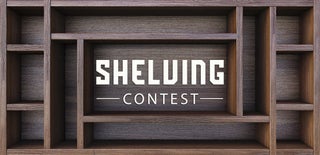Introduction: Wrought Iron and Hand Hewn Oak Shelves
We have a Century home. When adding shelving to our office, I wanted something that fit the decor of the age of the home without being too modern or dated.
I chose to put in hand hewn oak, 2 inches thick, on wrought iron brackets. I put 4 shelves up total to put pictures and whatever else my wife deemed necessary for her office.
Here was the process.
Supplies
Red oak - I used 2" thick or 8/4s x 6" x 4' pieces. - milled 1/4 mile from me from old growth oak that was coming down.
Wrought iron brackets - sourced locally
Adze - to shape the wood into hand hewn
screws to attach
Tools:
Saw to cut to length
Drill to attach brackets
level to ensure nothing slides off.
Step 1: From Tree to Hand Hewn Shelf
A neighbor of mine took down several large red oak trees along the river behind his home. He milled it into beams, flooring, and boards for his new home (he tore down the old home as it was falling down.)
Once the boards had dried, they were square and smoothed on all sides. To get the hand hewn look, the face and bottom of the shelf was textured with an Adze. This is an arduous process on red oak as the timber is hard and does not want to cut to texture with the sharp adze edge. It also means constant resharpening. The idea is not to have perfectly even chips. There are machines for that. You want imperfections to show it was done by hand.
In my case all 4 shelf pieces were completed. No gym work out needed for a few nights after that. Adze work should be in crossfit or something. I firmly believe that tool is evil.
Step 2: Mounting to the Wall
The brackets I purchased were 6" x 8" wrought iron, amish made locally here in Ohio. I wanted the shelf to be against the wall which is why I left the back edge square. So I turned the brackets to be 6" under the shelf and 8 inches down the wall. Otherwise I would have a gap at the wall when attaching the two screws underneath.
Red oak needs predrilled as it will snap the screws or take a chance of cracking the wood.
The screws also did not line up exactly on studs in each place so drywall inserts were used to add holding power to the screws and ensure the heavy shelves would not fall.
The shelves are close to level but not exact as my home is not level. Had I made them completely level they would be skewed on the wall so they are close to level but off just enough to ensure they look right.
Step 3: Finishing Thoughts
I did not stain or coat (finish) the shelves but left them natural. They will darken and discolor slightly over time as they age.
Creating the shelves did not take much time once the adze work was done. I completed the installation work in just an hour. But the adze work took 5 hours, plus some more time practicing on scrap boards.
I like the shelves being just rustic enough that they look period to the home but they are also solid hardwood, sourced locally, built with pride, and uniquely mine.

Participated in the
Shelving Contest











